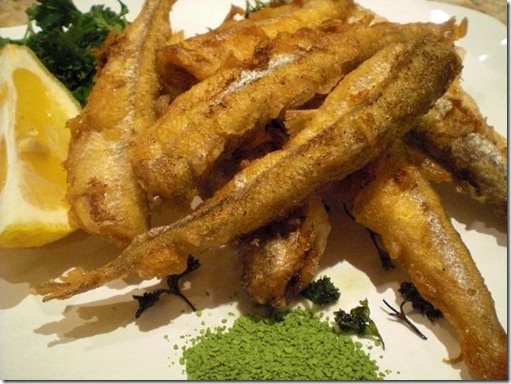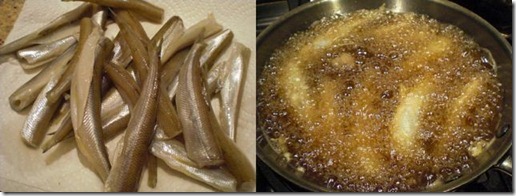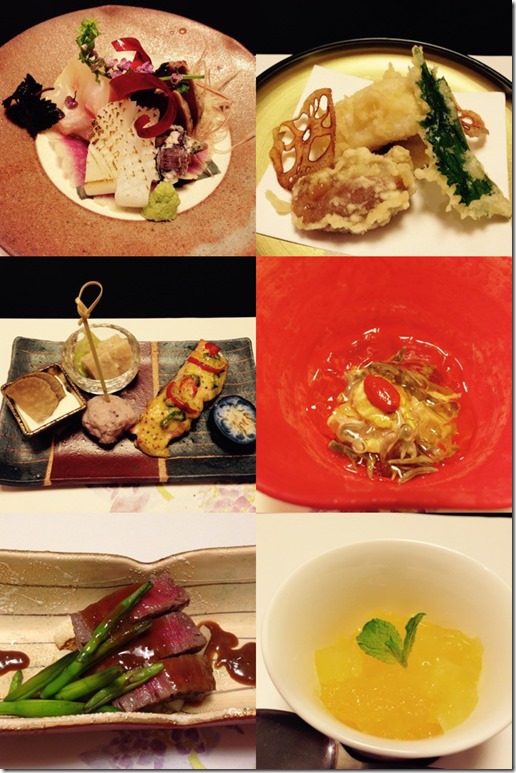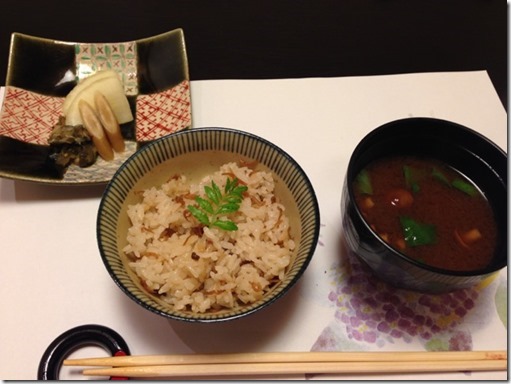We visited the San Francisco Bay area recently to attend a wine tasting and dinner held in honor of my former mentor. My friend, who organized the event, did a great job of putting together a wonderful great quality wine tasting of old vintages of California and Bordeaux wines emulating
the judgment of the Paris in 1976. Afterwards, we decided to stay in San Francisco and visit a few Izakaya style restaurants. One evening, I chose Yuzuki 癒月 from the information I gather on the Internet and it happened to be a great choice.
The restaurant is in the Mission district. The building is old and could have previously been a neighborhood eatery. “Yuzuki” is a created word meaning “healing moon”. The picture below shows a framed calligraphy of the restaurant's name. In the old style, the letters are read right to left.
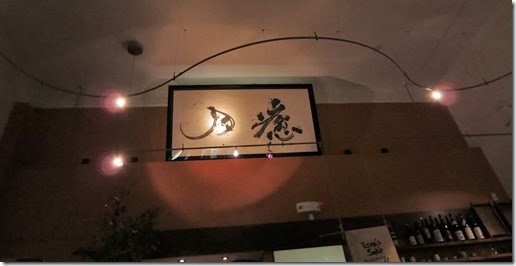
All the wait staff appeared to be Japanese and the two chefs busily preparing food could be seen through the pass-through opening in the back. The Sake sommelier was also at hand to explain the sakes they were serving. The atmosphere was informal and very pleasant. For a more realistic Izakaya atmosphere, however, I would have preferred more counter seating. They have a bar counter (leftover from the previous restaurant?) but it is not quite the same as an Izakaya counter.
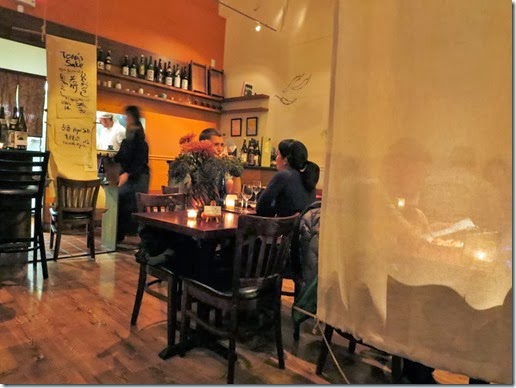
The table at which we sat was dark; darker than other tables which made picture taking a bit difficult. We started with a flight of four different sakes. The sake sommelier (a young man) served the flight and explained the types of sake, breweries, brew masters, flavor profiles etc. It was accompanied with a piece of paper with the name and short description of the sake. This is a much better way to experience a sake flight than the one we had at
Sakamai 酒舞 in New Yolk because all the relevant information was available right in front of us.The Dewazuru junmai 出羽鶴 純米酒 was served at room temperature and the rest were chilled. From right to left, Takatenjin, Diaginjo 高天神大吟醸, Shizuoka;
Fukucho “Suigetsu”, Junmai Ginjo 富久長 水月 純米吟醸酒, Hiroshima, Dewazuru Kimoto junmai 出羽鶴きもと純米, Akita; Yukino bosha, Nigori, Junmai ginjo, 雪の茅舎にごり純米吟醸酒 Akita.
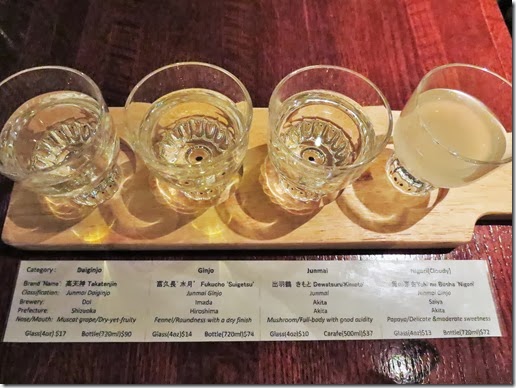
We really enjoyed this flight. After the tasting, we chose a bottle of Fukuchou Suigetsu from Hiroshima as our drinking sake for the evening. The brew master for this sake is a female which is very unusual. We liked this one because of its nice clean taste yet it had some depth with a distinctive fennel after taste which was pleasantly surprising.
I forgot to take a picture of the first dish which was three Kyoto and home style vegetable dishes called “obansai” おばんさい presented very nicely in three small bowls set in a wooden compartmentalized box. There were three specials on the menu that evening; 1) Hokkaido white squid sashimi, 2) raw oysters on a half-shell, and 3) anago 穴子 or sea eel tempura. We asked for the squid sashimi and anago tempura. In addition we ordered squid shiokara イカの塩辛 or “squid and guts”.

The picture above shows the squid sashimi. A portion of it was prepared in “naruto-maki” 鳴門巻き style with the nori seaweed. The legs were lightly boiled which was a bit chewy. This was very nice.
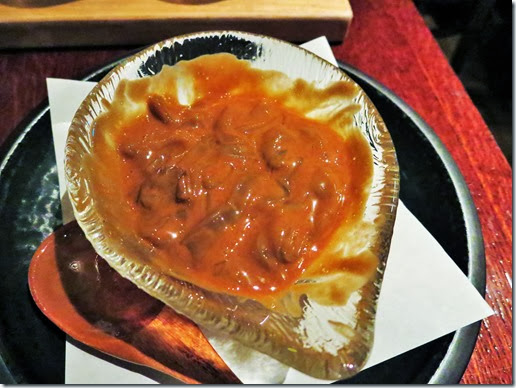
For the shiokara, we were well into it when I realized I had not taken a picture. We stopped eating long enough for me to quickly snap the pic. This was the best dish of the evening especially for my wife who is a shiokara connoisseur. This was home made by the chef rather than store bought and tasted of every bit of his skill.
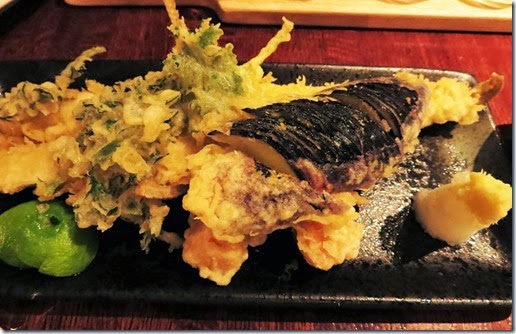
The anago tempura was huge. The entire anago was served with other items such as egg plant, mizuna, and sweet potato. The entire length of the bone was also deep fried and served (a portion of it is visible in the picture above as “U” shaped item in the back). We also had shrimp kakiage かき揚げ and a very good chwanmushi 茶碗蒸し with uni (it was very good but the uni looked and tasted like it was from Maine).
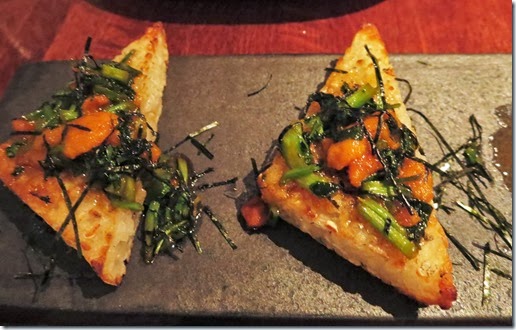
As a shime 〆 or ending dish, we had grilled uni rice balls うにの焼きおにぎり. Four small wedges of rice topped with soy sauce-butter seasoning, uni, green (water cress), thin strips of nori. These were perfect for the two of us. This combination of
uni and water cress sautéed in butter and soy sauce appears to have started out by the teppan-yaki 鉄板焼き place called "Nakachan"
中ちゃん in Hiroshima 広島 and was popularized by the new-trend sake bar "
Buchi" in Shibuya. This was very good with a crunchy crust and nice uni taste.
Although Yuzuki has the atmosphere of a small restaurant rather than an Izakaya, the food and sake were all excellent. If we were living in San Francisco, we would frequent this place often.
Information of Yuzuki:
Izakaya Yuzuki 居酒屋癒月
500 Guerrero Avenue, San Francisco
(415) 556-9898
http://yuzukisf.com/







